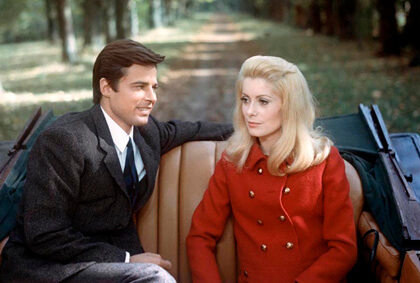Lawrence Leritz and Andrew Wentik with Dancers Over 40 president John Sefakis at the group’s March 23 tribute to Ruth Page. | DANCERS OVER 40
Dancers bring so much joy into our lives. But if I had a kid who wanted to do it for a career I don’t know how thrilled I’d be. The reality is a hard one and the professional tenure is short.
Dancer Over 40, started in 1990, is a vitally important foundation dedicated to providing a community of support for mature dancers, choreographers, and related artists. Their regular events are always special, bringing together living legends to reminisce about their careers, as well as thrilling performances.
I attended the group’s March 23 salute to Ruth Page (1899-1991) at St. Luke’s Theatre and learned so much about this incredible pioneering choreographer and director who made hundreds of dances that combined movement, drama, and even spoken word, the most famous perhaps being her “A Streetcar Named Desire.”
John Sefakis steers very worthy cause; the magic of McRea; fashion on film this spring
The event was marvelously put together by her esteemed colleagues Lawrence Leritz and Andrew Wentik, and just to be in the presence of dancers who’d collaborated with Page over her 60-plus years of work — all of them still beautiful and vibrant, like Mel A. Tomlinson, Helene Alexopoulos, and George de la Pena — made me tingle all over, as only performers of this caliber can.
The ebullient longtime president of the foundation, John Sefakis, spoke to me in his 54th Street apartment, and his kaleidoscopic life is, in itself, a vivid portrait of what it takes to survive and thrive in New York City as a dancer. Born in Worcester, Massachusetts, to Greek restaurateur parents, Sefakis was “the renegade editor of my high school newspaper, always putting in the Supremes, who I worshipped and saw perform in 1963. I hated Worcester and the University of Maryland in Baltimore was the furthest away I could get. I was in the middle of everything, when King was shot, the riots and anti-war thing in DC, from 1967 to ‘74. While doing grad work in journalism, I fell into the drama department, particularly directing. I realized I had a talent for movement and scene work more than being Brick in ‘Cat on a Hot Tin Roof,’ and that’s what I should be doing. My parents weren’t thrilled but I said, ‘Who sent me to tap and ballroom dancing and clarinet lessons in the first place?’”
While working a retail job in Georgetown, “this Armenian kid who had been our paperboy came in. I asked what he was doing and he said the play ‘Jumpers,’ with Jill Clayburgh, and the following year he came in again and was doing ‘Damn Yankees’ with Gwen Verdon. He said if I ever got to New York to come visit him. I asked where and he said, ‘Phil Black Dance Studio.’
“So when I moved here in 1975 — with ‘Chicago,’ ‘A Chorus Line,’ and ‘Pacific Overtures’ happening — I went to Phil’s, where on the first day I met this girl wearing a ‘Chicago’ T-shirt, Lisa Mordente, daughter of Chita Rivera, one of Dancers Over 40’s very special angels. I wasn’t a dancer but a director, so I took the beginning tap class. The teacher said, ‘Get out of here’ and pushed me into a more advanced class. I was so scared of Phil I never talked to him but he would come into classes and pick people to be in his class. I joined him in March 1975 and by May, Jingle Tap Betty, his assistant, asked, ‘What are you doing this summer? Phil wants you to teach advanced tap, as he’s going away.’
“You see, I had learned the right tap from my first teacher who laid a really good June Taylor foundation. And, by the way, that paperboy’s name was Eddie Mekka.”
Sefakis stayed at the studio until 1989 but had to get a daytime job to live, which he found as a secretary at HBO, then went to PBS, where he helped to put together the short-lived but wonderful Metro Arts Channel, while also teaching 300 Brooklyn black kids tap for 20 hours a week (“really good money”).
There was also, ahem, a stint at hooking — “because it was fun to do. Back then you’d have to go to this place in London Terrace and get auditioned and you’d hear people on the phone, ‘This is the fifth time Nuryev has called tonight. He puts on different accents like it’s not him!’ I didn’t get a lot of calls because I’m the short little Greek but I did a couple of politicians and was stunned when they committed suicide afterwards. Not because of me [laughs].
“I went to the Center in the ‘90s for Gay Date Bait and this guy stood up and said, ‘I’m Chris Nelson, president of Dancers Over 40.’ I thought, ‘I don’t want to date him — he’s old, like 55 — but maybe I can help him. He never called me back, but a little later I saw him at the gym and then he saw me doing my activist stuff at Wigstock on a float, in a thong, platform shoes, and a banana on my head, throwing out condoms, and then he called me.
“By then he was no longer president, but I started meeting the people. After a little coup got rid of the succeeding president, they asked me to be on the board and eventually president, saying, ‘You have the administrative stuff we don’t have.’ I came on board in 2003.
“Dancers Over 40 started in 1994 and membership was very high in the ‘90s but then fell off. They had 72 members, down from 650. I started doing the website and newsletter, which had been a mimeographed sheet, trademarked our name and logo, and came up with seminars for those people who can no longer dance but still can talk about their careers. Every other year we give a concert with those who can perform and present an award to those who have excelled. Our first concert was ‘Ladies of the 1940s,’ with original dancers from ‘Pal Joey’ and ‘Something for the Boys.’
“We originally did them in a rehearsal studio and all these big people like Scott Rudin would come. Then Ed Gaynes generously donated St. Luke’s Theatre for our Gower Champion event with everyone from the original ‘Hello Dolly!’ cast. Meanwhile, we had no one to deposit checks or even a treasurer, but I got a note from Tom Viola of Broadway Cares, which said, ‘You’re great so here’s $10,000 a year, starting now.’ I was a crying mess in the post office.
“Unfortunately, we don’t have the volunteer and manpower. People are dying — Luigi [Faccuito, tap legend] just died yesterday — and we have people that are passing on on a regular basis. So we have a hard time finding people and have no treasurer, no PR or marketing person. There’s only so much I know and our board is made up mostly of dancers and I can only ask them to do what they can do. People ask, ‘Why is John doing everything?’ Well, if I had people to do it…
“The young people are afraid to come on because they don’t want to be identified as 40. Jerry Mitchell, who lived in my building for 25 years, I kept on prodding him to join. All of a sudden I got an email from his assistant, ‘Hey Jerry would like to join.’ I realized he just turned 50, so 40 sounds pretty good. He joined our board four years ago and donates money every year.”
Along with everything else, the ever politically active Sefakis finds time for his drag alter ego, the popular Stella D’oro, who raises money for AIDS charities. Stella’s Facebook page, by the way, was recently erased when yours truly mentioned her on Facebook, mistakenly misspelling her name with a capital “O.” This aroused the attention — and ire — of some troll with the same (but differently initialized) moniker who reported this. In its infinite stupidity, Facebook summarily shut our Stella down. Be warned — it could happen to anyone.
But, the message I want you to take away is: come on people, you love the dance and you’ve certainly loved these dancers, so lend a hand and a dollar or two. (dancersover40.org)
Joel McRae, in a photograph by Ernest Bachrach.
In its wonderful Acteurism series, MoMA is saluting Joel McCrea (1905-1990) who, besides being one of the sexiest examples of Hunkus Americanus to ever grace the screen, was also a fine, truly underrated actor, the absolute equal, if not superior, to his more lauded contemporaries — Gary Cooper, James Stewart, and Henry Fonda. Ever modest, saying he was the one directors turned to when they couldn’t get Coop, he nevertheless made the likes of Hitchcock, Hawks, Wyler, Cukor, George Stevens, and, especially Preston Sturges — with whom he made the memorable “Sullivan’s Travels” and “The Palm Beach Story” — very happy while delighting generations of filmgoers.
As savvy as he was talented, on the advice of early mentor Will Rogers, he purchased California land that made him one of the richest Hollywood actors. I was privileged to know his longtime wife, exquisite actress Frances Dee, a straight shooter if there ever was, who because of her children’s bad business decisions was reduced to living in the servants’ quarters on the sprawling San Fernando Valley ranch she once owned. When I told her how hot I thought McCrea was (a view shared by his biggest fan, Maureen Stapleton), Dee laughed, “Oh, Pop always said the kids made fun of him when he was young, calling him ‘Potato Nose.’”
Screening in the MoMA series is the 1935 “Barbary Coast” (Apr. 15-17, 1:30 p.m.), directed by Hawks and Wyler, scripted by Ben Hecht and Charles McArthur, a rip-snorting melodrama set in the roustabout San Francisco of 1850 with Edward G. Robinson as the town’s vice kingpin and regular McCrea leading lady, the blazingly talented Miriam Hopkins, as his glamorous croupier mistress, Swan, who falls in love with earnest young McCrea. Beautifully, foggily designed and photographed (by Ray June), Hopkins emerges from the mist and, early on, delivers an impassioned monologue about the need for a woman’s independence — a moment showing why she was considered maybe the most exciting actress of the time.
“He Married His Wife” from 1940 (Apr. 29-May 1, 1:30 p.m.) was an especial favorite of critic Pauline Kael’s. Scripted by John O’Hara, among others, the film gives McCrea the chance to show off his sterling and sexy comic skills as an inveterate horse race gambler who tries to marry off his ex-wife (“The Bad Seed’”s Nancy Kelly, when she was young and fresh) to his dullard pal (ever-reliable Lyle Talbot), so he can use his alimony payments at the track. Delightfully ding-a-ling Mary Boland hosts one of those juicy weekend parties, so beloved by the screwball comedy genre, where everything comes apart and then together. (11 W. 53rd St.; moma.org/visit/calendar/films/1564)
Catherine Deneuve (with Jean Sorel) wearing Yves St. Laurent in “Belle du Jour.” | FIAF.ORG
To herald the spring in a stylish way, the French Institute/ Alliance Francais (FIAF) is hosting “Haute Couture on Film” every Tuesday through May. Get your chic on, watching the divas strut their stuff: Chanel outfits the cast of Renoir’s masterpiece “Rules of the Game” (May 5, 4 & 7:30 p.m.); Catherine Denueve wears Yves Saint Laurent to whore her afternoons away in “Belle de Jour” (May 19, 4 & 7:30 p.m.); and it all culminates in Deborah’s Riley’s terrific doc “Versailles ‘73: American Runway Revolution” (May 26, 4 & 7:30 p.m.), when the gorgeous black models in American ready-to-wear demolished French couture in a legendary fashion face-off. (fiaf.org/fashion/2015/2015-04-cinesalon.shtml)
Contact David Noh at Inthenoh@aol.com, follow him on Twitter @in_the_noh, and check out his blog at nohway.wordpress.com.





































